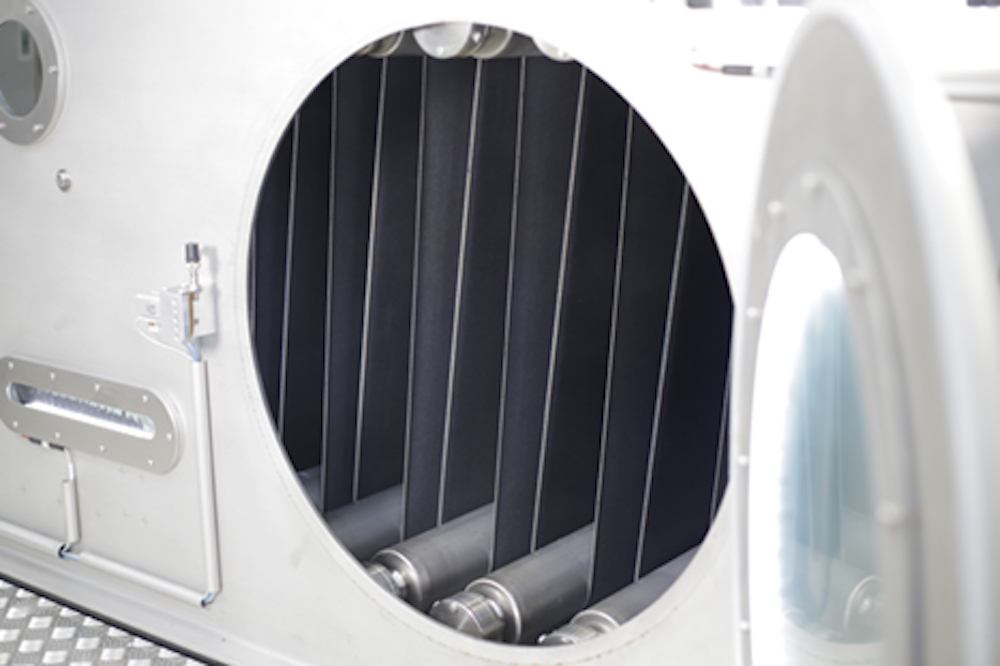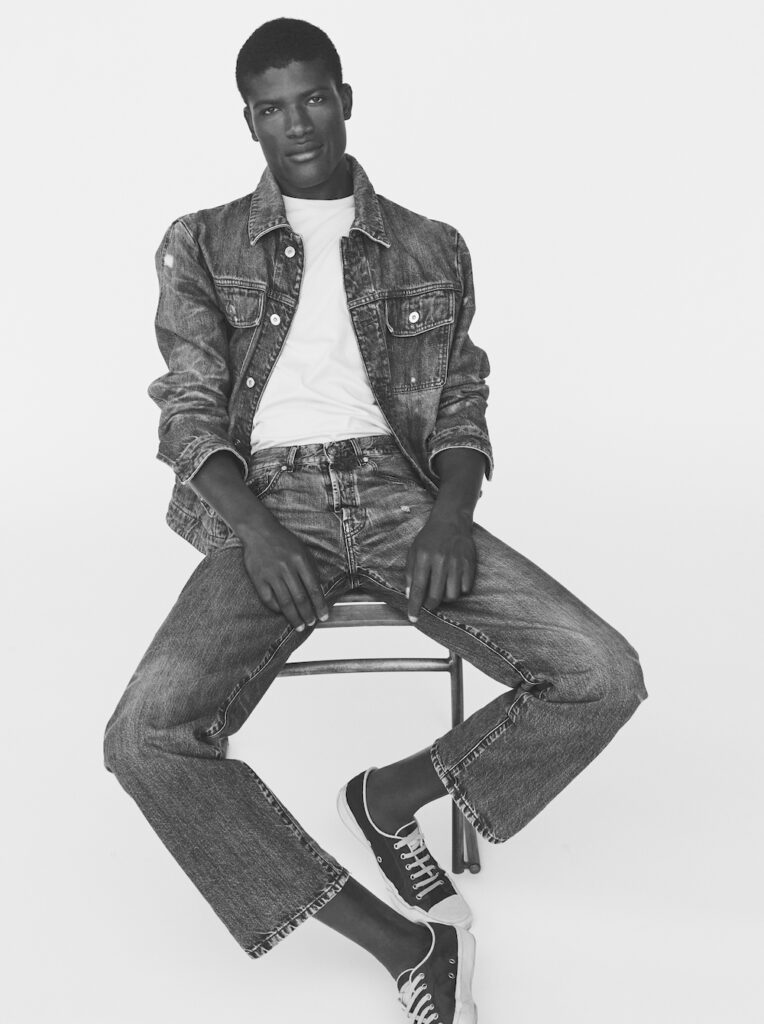
Materials | Simple Pleasures | SDW 2022

In our quest to create clothing that is a source of joy for the Simple Pleasures collection, we meditated on this question: What makes clothing comfortable?
A well-cut design, thought to allow us to move freely and feel well, can only benefit from the best fabrics. Breathability, stretchability, softness, the touch on the skin—all of these characteristics play an important role on how comfortable a fabric can be. Alongside them, emotional and psychological aspects can also make a difference: What are the stories behind it? How sustainable is it? Who took part in its processes? How technological or innovative is it? What makes it special?
In that sense, the benefits of TENCEL™ fibers can be discerned instantly: next-to-skin-softness, smooth to the touch, efficient moisture management, luxurious in luster and flow—they caress the senses. Peace of mind comes from knowing that the fibers originate from wood sourced from sustainably managed forests, combined with a closed-loop manufacturing process—TENCEL™ was the first-ever textile fiber to be designed around minimizing environmental impact.
This concept of physical and emotional comfort guided us when choosing fabrics that combine these amazing properties of TENCEL™ with cotton’s breathability, hemp’s minimal impact and elastane’s comfort. All of them used to construct garments with Coats threads’ high quality.

In addition, we took into account of each fabrics Light Sensitive score. This is a test that accurately measures the suitability of denim fabrics for laser marking, based on sensitivity to light, and provides an objective score of fabric sensitiveness to the laser and sustainable finishing processes.
#1 LOVE SAPPHIREBLACK RN0475 – Bossa
Composition: 60% Cotton, 40% TENCEL™ Lyocell // 12oz // 3×1 RHT //
LSF score: 57
#2 LEHIGH P23315 – Cone Denim
Composition:49% organic cotton, 25% TENCEL™ Lyocell, 14% cotton, 12% hemp // flash finish (G2 dynamic technology)// 11 oz // 3X1 RHT
LSF score: 53
#3 2020-438-SO – Kaihara
Composition: 65% TENCEL™ Lyocell, 35% cotton // 12oz. // 3X1 RHT
LSF score: 60
#4 4175B-46 – Orta
Composition: 71% TENCEL™ Lyocell, 11% TENCEL™ Modal, 11% post-consumer recycled polyester, 3% pre-consumer recycled polyester, 2% elastane, 2% polyester // 10,76 oz // 3X1 RHT
LSF score: 54
#5 LC-8610-W-BSO – Kaihara
Composition: 74% cotton, 26% TENCEL™ Lyocell // 11,75 oz // 3X1 RHT
LSF score: 56
#6 MD5412-A REGULAR – Bossa
Composition: 40% TENCEL™ X Refibra, 40% recycled cotton, 20% hemp // 13.75 oz // 3X1 RHT
LSF score: 56
#7 1881-023-3 – Kaihara
Composition: 74% Cotton, 26% TENCEL™ Lyocell – Selvedge Denim // 12.00 oz // 3X1 RHT
LSF score: 58
#8 9708A-43 OBI-WAN
Composition: 60% Organic cotton 40% Ecovero Viscose // 13,41oz // 3X1 RHT
LSF score: 53
#9 Raisa – Bossa
Composition: 71% cotton, 25% TENCEL™ Modal, 4% elastane // 11,25oz // fancy weave
LSF score: 49
#10 OD2917-2 – Prosperity Textile
Composition: 100% TENCEL™ Lyocell // 6oz // 2X1 RHT
LSF score: 43
#11 2125 printed twill – House of U
Composition: 100% TENCEL™ Lyocell // 160 gr/m2 // twill
#12 2122 printed satin – House of U
Composition: 100% TENCEL™ Lyocell // 100 gr/m2 // sateen

LSF – Light Sensitive Fabric
Light Sensitive Fabric, or LSF, is a standard created by Jeanologia to assess a fabric’s performance when marked with laser technology. Key aspects are evaluated (such as luminosity, contrast, linearity, visual aspect and damages) through a Light Sensitive Fabric Test, which combines a Bluescan and a visual analysis performed by an expert to determine how laser-friendly a fabric is. This process results in an LSF score: The higher the score, the better the fabric’s overall performance with laser. But a low score does not necessarily translate into a bad fabric. By allowing us to visualize the effects generated in a given fabric, the LSF test works as a tool that helps the design team to select the perfect fabric for the look they are going for, enhancing the whole process’ efficiency and lowering its potential negative impact, both on the environment and workers.
G2 Dynamic

G2 Dynamic uses ozone technology as an eco-efficient alternative for some of the most water-intensive and pollutant fabric finishing processes, while improving fabrics’ crocking and color fastness. Fabrics finished with the G2 Dynamic achieve the desired results in less time, which means savings in resources both in the production of the fabric and throughout the subsequent stages in garment production.

Previous post: Collaboration
Next Post: Technology and Sustainability






